Puppy Grooming ... More Than About Looking Good
Regular puppy grooming do more than just ensuring your puppy looking sharp and smelling fresh. Grooming also help establishes healthy habits and is a great way to know more about your puppy's physical condition. Simply put, there are no better time to run quick check-ups of your own than during grooming sessions.
Her first grooming should start around 10 - 12 weeks of age and accustoming your puppy to being handled, or better yet looking forward to being groomed way before her first ever session is paramount. Done right, grooming can be great bonding activities too!
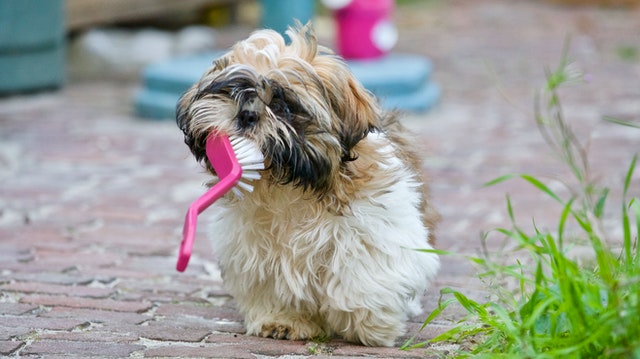
"Warming" her to puppy grooming tools
Acclimating your puppy to the various puppy grooming processes and the tools involved should start during the 7th or 8th week of age. With praises and her favorite treats at the ready, let's begin:
1) Present the tools you'll be using (Example; the brush or nail clipper) for your puppy to sniff. It is best to start out with a single tool at a time so as not to overwhelm her.
2) Remove the tool. Once out of her sight, reward your puppy immediately.
3) Repeat the above process until she seems comfortable around said tools.
4) Next, repeat up to step 2 but this time associate her with the sounds produce by these tools during grooming by fiddle with said tools. For example; open and shut the nail clipper or scrubbing the brush on your palm. Do this once and reward her immediately.
5) Increase the number of times fiddling with the tools to two or three more times after a few sessions. When she seems relaxed around the tools and sound, remove said tools and reward your puppy immediately.
The 6 main areas of puppy grooming;
Brushing her coat
Puppies younger than 10 - 12 weeks old typically doesn't need a lot of brushing, or grooming for that matter. The occasional damp cloth and then towel dry gently but thoroughly would suffice if she does get her coat dirty. If you intend to brush her, a rubber-studded grooming mitt will do nicely and double up as a massage tool as well!
Once puppy grooming becomes a regular thing when your puppy is older (at 10 - 12 weeks old), coat brushing will be the area of grooming you'll be doing the most throughout her life. Now, different coat types require different amount of brushing. As a rule of thumb, any dog will require at least a through brushing once a week. The table below shows the recommended brushing required for each coat type.
|
Coat Type |
Grooming needs |
|
Short |
Once a week. |
|
Long and double |
Brush daily to prevent tangles and matting. |
|
Curly and woolly |
Brush 3 to 4 times weekly. Trim the coat by a professional once every 4 to 8 weeks. |
|
Wire-haired |
Brush daily. Have the coat hand-stripped (coat removed by hand) professionally 3-4 times a year. |
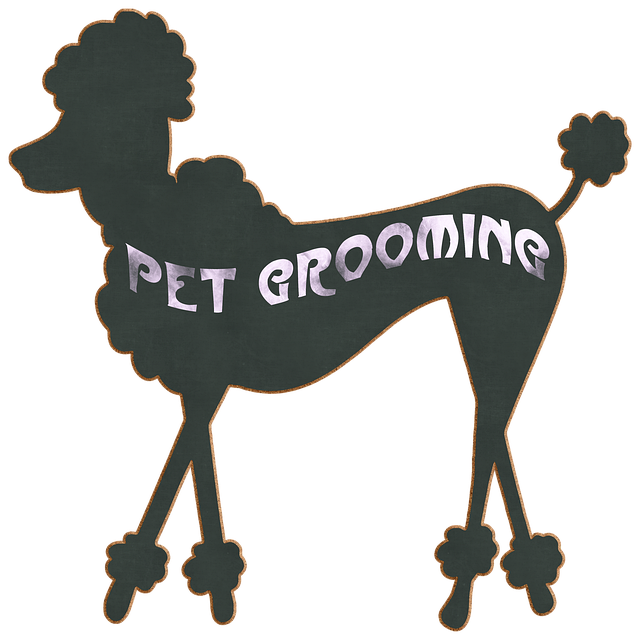 You can DIY or leave it to the puppy grooming professionals
You can DIY or leave it to the puppy grooming professionalsWhen brushing, pay special attention to the back of the ears, elbow crease, between her legs, under the tail and the tail itself as these areas are prone to matting. Matting is a condition where by your dog's hair are particularly dense, usually at certain parts of her body causing tangles and knots. Mats cut off air flow and allow moisture to gather, which can lead to irritation and infections.
Bathing
Young puppies do not need baths until they are at least 10 weeks old. In fact, bathing your puppy before that will likely cause her to diarrhea because she still can't regulate her body temperature efficiently. At this early stage, only bath her when you absolutely have to. And when you do, take extra care to towel her dry thoroughly and keep her warm.
For that matter, even a grown dog does not need to be bathe often. Usually your dog only needs a bath when she gets very dirty. Otherwise bathing once or twice a month would suffice. Avoid bathing her if she have a matted coat as moisture tends to trap which could then lead to skin irritation. With that in mind, grooming your dog before a bath is good practice.
Use only shampoos and conditioners meant for dogs in lukewarm water. Work the shampoo or conditioner right down to the skin and rinse thoroughly to prevent skin irritation and hair loss. There are however, some conditioners designed to be left on the coat so read the labels carefully.
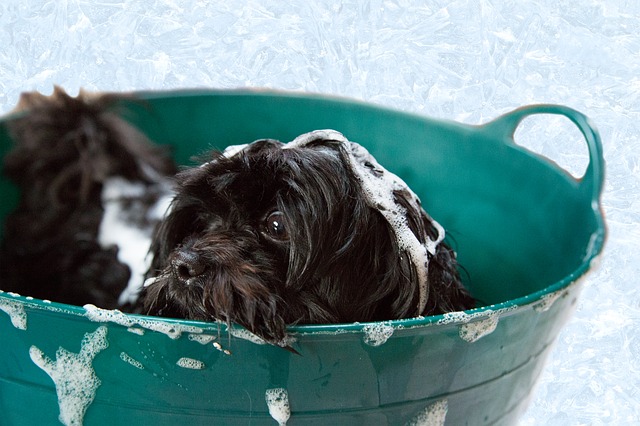 Bathing can be a fun or nightmarish aspect of puppy grooming. Early acclimation is key!
Bathing can be a fun or nightmarish aspect of puppy grooming. Early acclimation is key!You may have heard on seen videos of how much of a struggle it is bathing a big, grown and reluctance dog. Imagine having to wrestle a large breed like German Shepard to and in the bathroom! The only upside to that madness is sharing that same dread with your dog every time you attempt to bathe her! Albeit from a different perspective but not a fun time for either of you nevertheless.
The challenge of bathing though, is unique compare to most puppy grooming routines. For a start, you don't get to "practice" it very often, even less so when she is very young. Now, don't let that stop you from prepping her to look forward to taking an actual bath! Easier, more manageable bathing sessions can be a reality if you get your puppy "warm-up" to the idea of taking baths early on in her life.
Associating bath time with fun!
- Decide on a command you wish to associate with bathing. One syllabus commands, such as the word "bath" are prone to confusion due to the likelihood of "accidentally" using it in everyday conversations. Two syllabus is the Goldilocks approach to commands. These commands usually manages to keep it simple with just enough room to be distinct. Granted, "Bathing" is still too general a command, "Bath time" however is a much better option. Really, you can make up whatever word you want so long as it is distinct enough for the activity.
- With her attention, say "Bath time" or whatever command you have decided and brisk walk to the bath area, waving the treat or shaking the treat cup to hold her attention along the way, prompting her to follow you. Once arrived, reward her immediately. Repeat this for a couple of times a day until she beat you to the area.
- Put a rubber mat or towel in the bath area for traction. On your coming visits, reward, stay and play with her for about two to three minutes before leaving. Repeat this step until your puppy expects to stay around and play.
- Next, run the tap gently as you play but let it drain or fill a pail nearby. Gradually turn up the water as these sessions progress. If you are using a tub, let it drain, don't fill it with her in it...not yet.
- Let the water run beneath her feet or if you are using a tub, fill it only to her ankle deep. Reward her if she is curious (sniffing the water) but not squirmish. If your puppy shows any sign of distress, stop the water and calm her down first by gently holding and talking to her. Try again and if distress persist, retrace to the beginning steps again. Patience! Remember puppies are very impressionable at this stage of their life. The last thing you want is her developing a fear of bathing or water. But on the plus side, once she grew to love bathing, you'll be set for a much easier and enjoyable time for life.
- Proceed gradually until you're able to fill the tub or she accept water being shower to her thighs and then her back. At this point you should be able to bathe her with ease.
After this acclimation exercise, all that's left is making every bath going forward a positive experience!
Nail trimming
Long nails could cause feet structure to shift out of position, causing strain, injury and foot deformation over time. This aspect of puppy grooming not only requires her to accustom being handled by her paws, she also needs to get used to the clipping sound made during nail trimming.
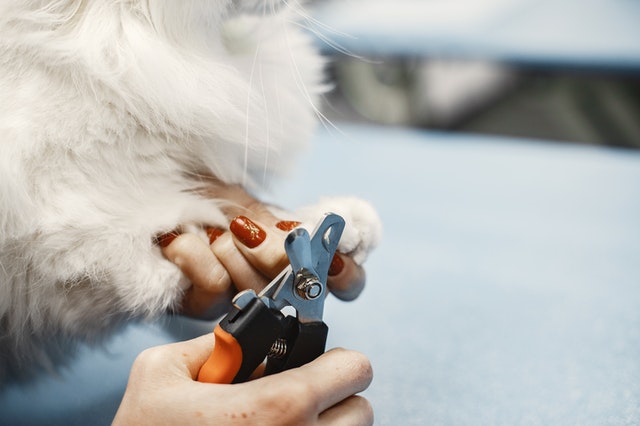 Puppies' paws are sensitive. Be extra gentle when you trim her nails.
Puppies' paws are sensitive. Be extra gentle when you trim her nails.Puppies and grown dogs alike are very sensitive about their paws. It takes trust and conditioning for your puppy to allow her paws to be handled for any amount of time. And because dealing with a clipper-phobic dog can be a nightmare to anyone involve regardless whether you choose to do her nail trimming yourself or leaving it to a puppy grooming professional, it pays to accustom her to the process beforehand. Here's how to promote paw-friendly handling:
- Everyday for a week or two, touch her paws throughout the day whenever you can. When she allows you to held a paw for over a second, praise and reward her immediately. That's it for now!
- Next touch her paws with the nail clipper gently for a second. Praise and reward her immediately. Play around with the clipper, opening and closing it to accustom her with the sound it made.
- Now move her to a position you are most comfortable in as if you are going to do an actual nail trimming. It could be on your lap or sitting beside her, holding her paws. Avoid facing them directly as some puppies find it threatening!
- Practice this position holding her paw for two seconds then let go. Praise and reward her. Gradually extend the time and work your way up to ten seconds. If your puppy become restless for example, at the five seconds threshold, don't reward her. You don't want to accidentally encourage the wrong reaction! Dial it back to four seconds in this case and then slowly work your way up to ten seconds. Again, patience is key.
- Once your puppy could hold the position for ten seconds, cut just one of the nails. When it goes well, trim two nails the next day then three on the third day and so on. Take it slowly. A nail trimming cooperative dog is well worth your time.
Tips
1) Mastering the 'Sit' command will make nail clipping so much easier.
2) If you are clipping her nails on your own, know that you don't have to finish it in one sitting. Doing one nail a day is quick and hassle free, especially if your dog resist nail clipping in general. This doubles down as a great way to accustom her to being handled for the nail trimming process too.
During trimming, clip only the tip of the nail. Inside each nail is a tiny pink vein which is easy to see only in clean white nails. Trim too deep and you might accidentally cut that pink vein. When nicked, it is extremely painful for your puppy and will cause profuse bleeding. Vets and grooming professionals will have no problem showing you how its done. If you are still unsure, just leave it to the professionals for a small fee.
The frequency of nail trimming vary from dog to dog. Active dogs for example, would require less trimming because playing, running and digging will help chip away the growing nails naturally. In that sense, breeds with low energy level or aging dogs will need their nails clip more often. Your puppy's nail making the "clicking" sound on the floor when she's moving around is the tell-tale sign that she needs her nail trimmed!
Oral care
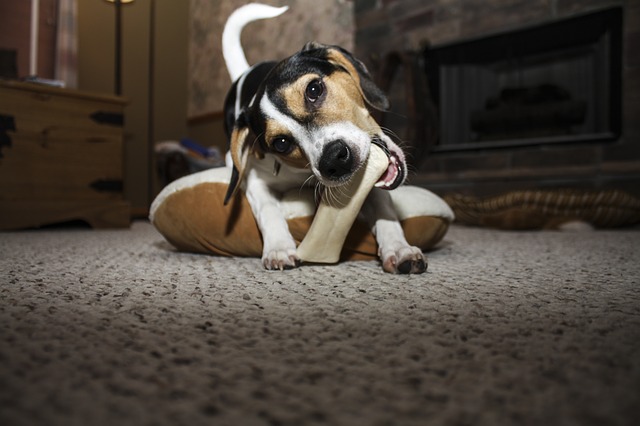 A crunchy diet helps remove plaque buildup.
A crunchy diet helps remove plaque buildup.Studies have shown that the overall health of dogs are greatly reflected upon their oral health. In fact, veterinarians have include dental checkups as part of a dog's annual health assessments. Poor dental hygiene often lead to tooth decay, periodontal as well as heart, kidney and liver diseases which are both dangerous and costly later on in their life.
Brushing her teeth once a week, a couple of good chew toys along with a steady diet which include quality raw bones and crunchy dry food will help stimulate the gums and prevent plaque build-up.
Getting your puppy used to the teeth-brushing procedure takes time. Accustom her by doing the following;
- Spend sometime resting your thumb across the bridge of her nose with your fingers under the chin, keeping her mouth closed. Do this a few times.
- After she got used to it use your other hand to lift her top lip, revealing her teeth. Be gentle! Do this a couple of times a day for a few days.
- Now try brushing her teeth with a toothbrush or fingerbrush with toothpaste. Brush tenderly in a circular motion, paying extra attention along the gum line.
Last but not least, use only dog-specific teeth-cleaning products!
Ears cleaning
Ear infections are common. It is largely responsible for what is commonly known as the 'Doggy odor'. The causes are many including mites, allergies or foreign objects. Symptoms include inflammation, profuse scratching due to ear irritation, head shaking, discharge or bad odor.
Now, just because ear infections are common doesn't mean we should downplayed it. Any of the above symptom warrant a visit to your vet as not only can ear aliments be very uncomfortable, it could also lead to fever, depression and loss of balance among other problems.
A routine ear cleaning every couple of weeks is usually all the maintenance your dog needs although some breeds require a more frequent schedule. As a rule, breeds with floppy ears require more care due to poorer air circulation. Wipe the outside and inside of your dog's ear flaps with a cotton ball soaked with a commercial ear solution dedicated for dogs. Be extra gentle during cleaning as the ears are very tender. Don't push in too deep into her ear canal or you might risk causing pain or worse, irreparable damage.
Dogs with hairy ears tend to trap moisture, ear wax and parasites so its also a good idea to speak to your vet or groomer for instructions on how to remove those hair or have the professionals remove them for you.
To prevent water from entering the ear during bathing, stuff a cotton ball at the entrance of the ear canal before proceeding. After bath, simply wipe the ears out with a fresh piece of dry cotton.
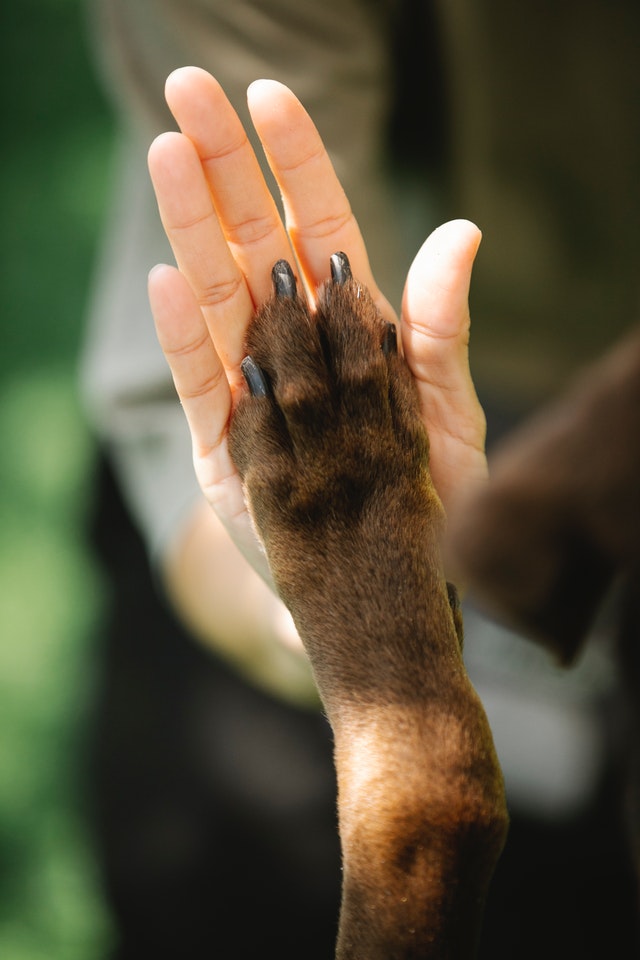 Hassle-free puppy grooming is about trust first grooming second!
Hassle-free puppy grooming is about trust first grooming second!
Anal glands clearing
The two small glands located just next to her anus produce an oily, pungent secretion that dogs used to identify and greet each other. This is the reason why you see dogs go after and sniff each other's rear when they meet!
Clearing the anal sacs and keeping the surrounding anal region clean and odour-free is often neglected in puppy grooming. Blocked anal sacs are uncomfortable and could become painfully abscessed. Not all puppies are equal, some are more susceptible to this condition. If you see your puppy dragging her butt on the floor, her anal sacs are probably clogged.
Usually the glands are emptied during bowel movements. But some secretion might be left behind and build up over time. This residue then turns into a thick, gooey liquid that clogs the openings of the anal sacs. As with other aspects of puppy grooming, you could leave it up to the professionals, namely your vet or you could learn to empty these glands, DIY style. The major plus of doing it yourself is being able to clear them more frequently. It is a not difficult, a little gross maybe but doable.
To clear the anal sacs, wear disposable gloves and squeeze both sides of the anus with your thumb and forefinger starting at the four o'clock and eight o'clock position. Holding your squeeze, slowly move up, finishing at three and nine o'clock. Repeat a couple more times. That's it! If you are still in doubt, simply ask your vet to demonstrate on your next visit.
- Home
- Puppy Health Care
- Puppy Grooming